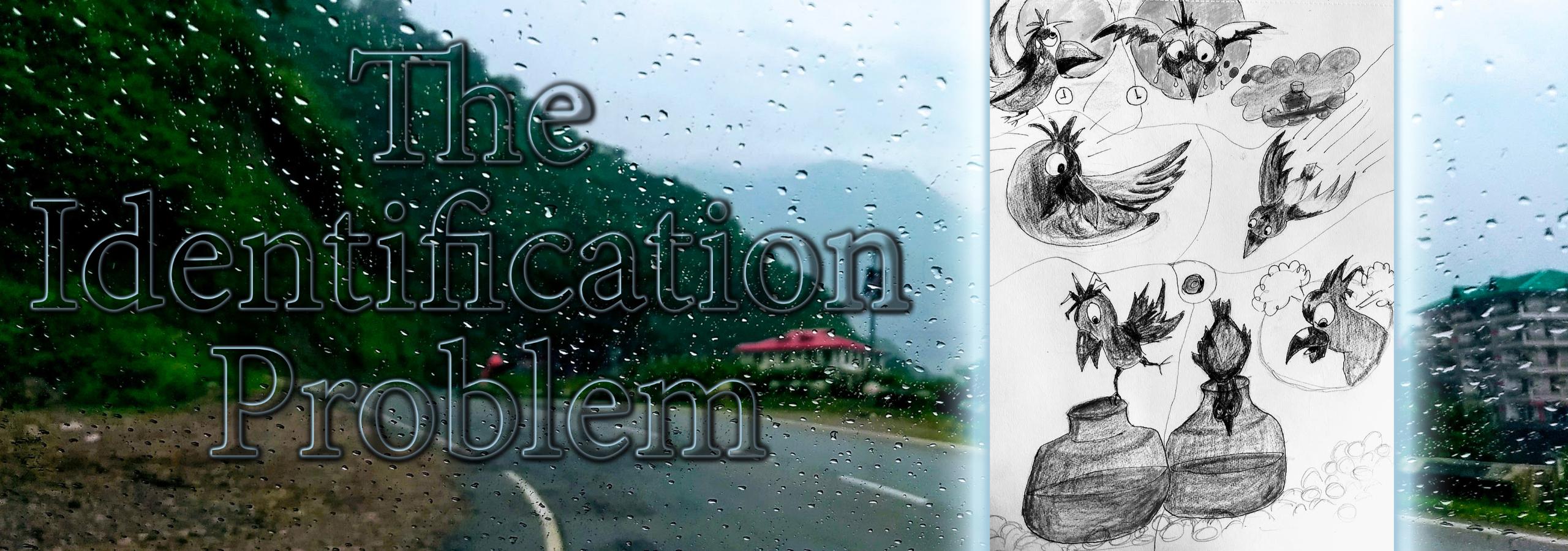Mind guided by reason finds itself surrounded by diversity. Diversity creates the problem of the unknown, the worst fear mankind in general faces daily. To solve the crisis of the unknown, the mind begins the process of classification and generalisation, starting with the bifurcation of ‘I’ and the rest. Each classification results in a separate unique identity, which needs to be further analysed and studied in the greatest detail possible to ascertain its familiarity. The elementary intellectual quest brings us to two broad identifications - the inner ‘I’ and the rest of the outer world. The more the mind seeks to tame diversity, the wilder it becomes - leading it to an endless pursuit.
Thus, the mind gets addicted to identification and it would not be an irony to assume that any addiction is a problem in itself. The entire discussion so far may appear as complete nonsense, without a little introspection. But beware introspection can be a dangerous venture. All introspective speculations are prone to criticism because doubt is the core of both processes. Doubt itself is neither a problem, nor a solution, but it is desirable because without it reason stands challenged.
The dilemma of Self-Identification
No identification is as important as self-identification. But to answer the question - “Who am I?”, is not that straightforward. Self is a true treasure, and this journey to self is a real adventure but definitely, it's not the easy one. Most aspirants give up, some catch a glimpse and rare among us attain the status close to that of Buddha. The infinitude of possibilities of self-identity can be grouped under four categories, closely resembling the Āśrama system of Vedic traditions, as follows:
Brahmacharya: Identifying as “What we become”
From the very virtue of our birth we become something - bequeathed with a plethora of relationships that create our basic identity. Given a name and asked the question - “Who are you?”, we have a ready-made answer. This identity saves us from social and intellectual annihilation. We get a ground to fall upon. But soon we find out that hereditary identity is not enough to create a clear picture of ourselves. Society soon begins to question our existence and demands from us to answer “What do we want to become?”.
This stage bears direct relevance to the Essential Triad. What we become decides our ability to meet the needs of this triad and as such determines the well-being of our Existential triad. Faced with this challenge we channelise all our energy to become something creating value for ourselves. With enough effort, time and chances we acquire social status, a designation and a livelihood which leads us to the next stage.
Gṛhastha: Identifying as “What we possess”
After we settle with the becoming process, we begin with this stage of acquisition and possession of material wealth. We copulate, reproduce and the product becomes our property. Creating new life we attain our biological target, providing and nurturing the life we fulfil our social goals. This grants us a social identity and we synchronise our identity with our possessions. We offer our services to ensure the survival of our race. As such, we become subject to the same gratitude which we offer to our ancestors.
Most of the aspirants give up at this stage, managing the nitty-gritty of livelihood proves to be too consuming and so they give up on further quests. Here we are supported, accompanied by friends and family.
Vanaprastha: Identity from “What we create”
The creative wisdom we share with gods grants us yet another opportunity to identify ourselves. We create as artists, scientists, architects and whatnot. Here we identify ourselves not with the profession but with creation - the act and the product. As creators, we make a place in history, in the memories of the masses. Here, we attain social immortality. We live an afterlife in the consciousness of others. A Buddha, Gandhi or Einstein will live as long as humanity survives. Even Hitler is immortal but it's not a very celebrated afterlife. We choose what we create with complete freedom and autonomy.
Very few among us reach this stage in our lives. But no matter what we must relentlessly pursue this ideal identity in imagination and strive at our hardest to realise it. In this flow state, we are alone because there is an ‘unknown’ ahead, deep in the darkness. The ‘Unknown’, the darkness has neither any relations nor any dependence, not even a reason for existence. So one has to tread this path solitarily.
Sannyasa: Identity from negation
Until this stage we seek identity with the infinite, now we realise the futility of our efforts. Here, is the place where we seek to disidentify ourselves in the largest possible ways to realise our spiritual identity. For a true self can only be described in the form of negations, neither this nor that. Every positive identification is the negation of infinite possibilities out there. Thus, only negative attributes to our identity can bring us to the real and ideal identity of ourselves. But no negation is possible without the acknowledgement of a positive counterpart, in imagination or reality. The act of seeking identity from negation is a rational process beyond all possible reason, i.e. it is a journey of reason from its birth to its demise.
Only a few great men reach this stage of identification. For them, the bipolar world ceases, and the duality of actions vanishes. The moral and mortal realm disappears in its entirety. Their existence loses relevance, pain and pleasure no longer generate any illusion of fear, nothing remains as the driving force. The finite minds can’t comprehend this identity as it becomes nameless, leaving behind no memories, no examples - just an essence of such possibility can be felt in universal consciousness.
